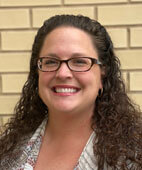By Heather Garcia
This is a beautiful time for women’s literature. Women no longer need to publish under pseudonyms for fear of their work not being published or read. Women are celebrated for sharing authentic stories from their authentic lives, and our literature can reflect the real emotional landscape of women from all over the world. A woman’s age is no longer a barrier to publication, and Margaret Atwood, at 81 years old, just published her newest poetry collection, Dearly, in the same year that 22-year-old Amanda Gorman was granted a national audience for her poetry at the presidential inauguration. I am convinced that the Bronte sisters are quite proud.
We know, of course, that this celebration of women’s literature hasn’t always been the norm. Women’s History Month wasn’t established until 1981 and it began as just Women’s History Week, but sensing there was more work to be done, in 1987, it was passed that the entire month of March of every year be celebrated as Women’s History Month. During this month, women are celebrated for their contributions to history and culture in the United States, and one intersection of history and culture is certainly literature.
What better way to embrace this celebration than by reading the writing of some of the most influential American female authors.
People undoubtedly read many works by women, but perhaps may not focus so much on the fact that they ARE women writers. How does being a woman change her view of the world? How does being a woman change the way stories are told? If the month is about celebrating women writers, it isn’t enough to just see their name on a cover and dive in, we need to consider what it means to be a woman, to have a story to tell, and to tell it in a way that honors the female experience.
One thing to keep at the forefront when reading women’s literature is the historical context of the piece. Literature written by women in the 1700s or 1800s will have a very different outlook on public and private life than a piece written by women in recent years. Sometimes readers need to be reminded that women weren’t allowed to hold land until 1862 and didn’t have the right to vote until 1919. These reminders help to place readers into the mindset of the women whose pieces they are reading.
Below are some authors and texts that you might want to consider reading or teaching during the month of March. Each of these texts celebrates women and their accomplishments in various ways, and reading any of these texts with a close analytical eye will undoubtedly help students as they prepare for the AP® Literature Exam and AP® Language Exam.
Novels
- Zora Neale Hurston’s Their Eyes Were Watching God
- Barbara Kingsolver’s The Poisonwood Bible
- Sue Monk Kidd’s The Secret Life of Bees
- Celeste Ng’s Little Fires Everywhere
- Toni Morrison’s Beloved
- Charlotte Bronte’s Jane Eyre
- Jean Rhys’ Wide Sargasso Sea
- Jamaica Kincaid’s Lucy
Short Stories
- Kate Chopin’s “The Story of an Hour”
- Sarah Orne Jewett’s “The White Heron”
- Zora Neale Hurston’s “Spunk”
- Kate Chopin’s “The Story of an Hour” and “Her Letters”
- Alice Walker’s “Everyday Use”
Poetry
- Maya Angelou’s The Collected Poems of Maya Angelou
- Margaret Atwood’s poetry collection, Dearly
- Elizabeth Thomas’s poem “The Forsaken Wife”
- Joy Harjo’s poetry collection, An American Sunrise
- Sylvia Path’s The Collected Poems
- Gwendolyn Brooks’ Collected Poems
Plays
- Zora Neale Huston’s Spunk
- Lorraine Hansberry’s A Raisin in the Sun
- Yasmina Reza’s God of Carnage
- Jocelyn Bioh School Girls; or, the African Mean Girls Play

Heather Garcia is an English teacher at Charlotte High School, Florida, where she teaches AP® English Literature and AP® English Language. She is a professional development leader in her district, running annual new-teacher trainings and is now the Curriculum and Instructional Specialist for her district for grades 6-12. After 16 years of hands-on experience, Heather has developed a series of strategies to help her students navigate challenging texts. Her favorite book is the Steinbeck classic, East of Eden.
 Help
Help